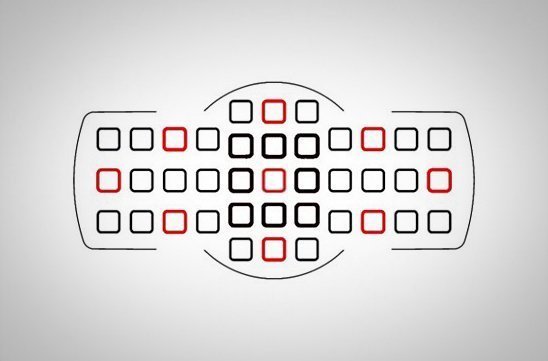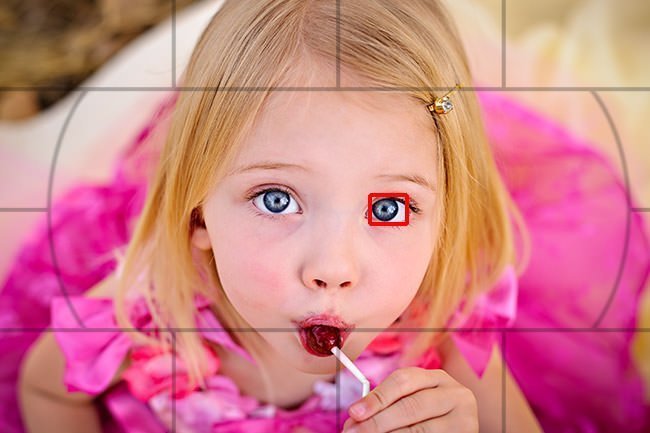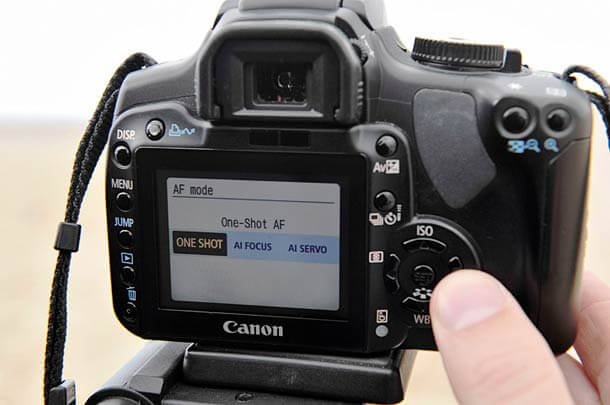Master those dots in your viewfinder: A guide to using autofocus points in your camera for sharper and crisp images.
Ever noticed those little dots when you look through your camera’s viewfinder? They’re called autofocus points, and they help make your photos clear and sharp.
Dive into our simple guide on ‘Autofocus Points (AF Points) In Your Camera.’ No matter if you’re new to photography or have been taking photos for a while, we’ll help you understand and use these little dots better.
Types of Autofocus Point Selections
Most DSLRs offer a cross-type focusing point at the center of the frame. All these points perform the same function: they focus on image contrast both vertically and horizontally, delivering a more accurate result. The more cross-type focusing points your DSLR has, the better the system will perform.

Generally, there are two main autofocus settings found in almost every modern DSLR camera:
- Automatic AF Selection
- Manual AF Selection
Let us now take a look at both the settings in detail.
Automatic Autofocus Points Selection
This doesn’t require a lot of technical explanation. When selected, your camera will automatically decide which autofocus points to use.
Leave the choice of the focusing point to your camera, and it will illuminate the selected point in the viewfinder when you press the shutter release to focus.
Automatic AF point selection works well in many different types of photography. It’s especially effective for birds in flight photography.
Manual Autofocus Points Selection
DSLRs also allow you to select the focusing point yourself. Such a feature comes in handy if the autofocus isn’t detecting the subject automatically, or you’re using One Shot autofocus and don’t want to reframe before taking each picture.
You can use one, two, or a group of points together, depending on the scene and the photograph you want to take.
To select a focus point, press the AF point selector button, then scroll through the points with the camera to your eye until the desired point is illuminated in the viewfinder.
Professional photographers often prefer manual AF point selection over automatic. It gives them total control over how and where to focus on the subject.
For example, you can achieve sharp and precise focus on a very small area of your subject with single-point autofocus.
Autofocus Points System
It’s easier to compose a good shot with a 51-point AF system than with a camera that has only 9 focus points. Here’s how both AF point systems look side by side.
I personally use a Canon 60D, which has just 9 focus points. For most of my photography, I use Evaluative metering mode and activate only the center focus point.
To compose a shot, I first place my center focus point on the subject I want to focus on, then press the shutter release halfway down to lock the focus. Next, I move my camera to compose the shot and press the shutter button fully to capture it. This is my typical workflow when using a 9-point AF system camera.
When you have 51 focus points spread across your viewfinder, covering all the main areas from left to right and top to bottom, you can directly compose your shot and move one or more focus points to the area you want to focus on.
Press the shutter button, and you’re done.
Camera manufacturers are now adding more focus points. The Canon EOS R is a prime example, boasting a total of 5,655 manually selectable AF points that cover 100% of the frame vertically and 88% horizontally.
Such a high number of focus points allows you to establish focus on your desired spot with pinpoint accuracy.
Does The Number of Autofocus Points Matter?
Autofocus systems are becoming increasingly sophisticated. This advancement has reduced the chances for photographers to make focus errors.
While it’s nice to have a sophisticated autofocus system, it’s not absolutely necessary.
Having numerous autofocus points is especially useful for capturing action shots. When there are many focus points spread across the viewfinder, it’s easier for the camera to maintain focus on the object you’re tracking.
So, the bottom line is that more focus points are better. Even the most basic DSLRs now come equipped with a 9-point AF system.
Type of Autofocus Modes

There are three primary focus modes that offer you tremendous flexibility to capture exactly what you envision.
1. One Shot Focusing Mode
Straight out of the box, your DSLR is likely set to One Shot focusing with all focus zones active. In this mode, the camera automatically determines the main subject in the scene and locks focus onto it.
Once the focus is locked, you can reframe the image by maintaining light pressure on the shutter release and then pressing down fully to capture the shot.
This mode works well for a majority of images where the subject remains still.
2. Servo Or Continuous Focusing Mode
When focusing on a moving subject, you’ll need a mode that continually adjusts focus right up to the moment the photo is taken. This is commonly referred to as Servo or Continuous focus mode.
Here, the camera tracks the subject across the focus points and predicts where the subject will be at the exact moment the shot is taken, ensuring crisp focus.
3. Automatic Autofocus Mode
Many DSLRs offer a focusing feature that combines the best aspects of the two aforementioned modes. The camera detects whether the subject is moving or stationary and switches between Continuous or One-Shot focusing as needed.
Different manufacturers assign this dual-function autofocusing system various names. Canon labels it as AI Focus, while Nikon dubs it AF-A, an abbreviation for Automatic Autofocus.
Metering Modes

Your camera comes equipped with metering modes to determine the correct exposure based on the amount of light entering the camera.
Often, a DSLR’s metering system is linked to the active focus point. These metering modes work in conjunction with your camera’s autofocus points.
The most common metering modes in DSLRs today are:
- Spot Metering
- Centre Weighted Metering
- Evaluative Metering
The chosen metering mode directly influences the overall exposure and mood of the captured image. Let’s take a closer look at each of these metering modes to understand how they operate and when best to use them.
Spot Metering

It evaluates light around a selected focus point and ignores everything else.
I personally use this mode frequently in my bird photography since birds often occupy only a small area of the frame. Because the light is evaluated at the location of my focus point, I can accurately expose the bird.
Centre Weighted Metering

This metering doesn’t consider the selected focus points and evaluates light only in the center of the frame. I use Centre Weighted Metering for close-up portraits and for relatively large subjects positioned in the center of the frame.
Evaluative Metering

Evaluative (in Canon) and Matrix Metering (in Nikon) are the default metering modes on most DSLRs.
A key factor that influences this mode is where the camera’s focus point is set. It gathers information from the entire frame and then prioritizes the area around your selected focus point.
I use this mode for most of my photography because it does a commendable job of determining the correct exposure. By selecting the right focus points and metering mode, you can significantly enhance the composition of your shots.
Conclusion
Autofocus points are a vital tool for every photographer, beginner or professional. These little dots in the viewfinder guide the camera’s focus mechanism, ensuring clarity in every shot.
While the evolution of autofocus systems has brought about more sophisticated and accurate focusing methods, it’s crucial for photographers to understand their cameras’ autofocus capabilities and how to leverage them for different scenarios.
Whether you’re capturing fast-moving subjects or aiming for perfect composition, knowing when and how to use autofocus, as well as when to switch to manual focus, can be the difference between a good shot and a great one.
Remember, photography is both an art and a science. Balancing the two, understanding your equipment, and practicing regularly will help you achieve the perfect shot every time.


